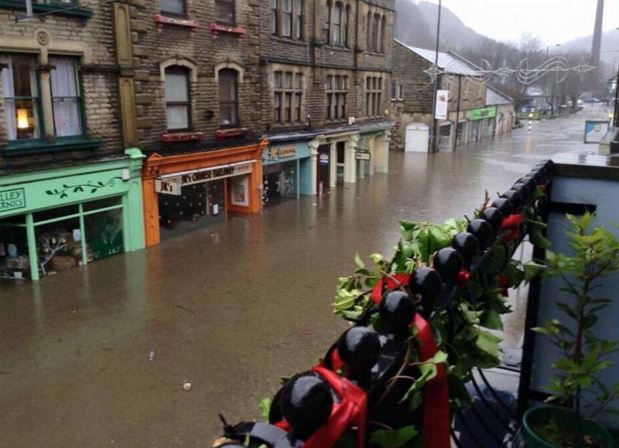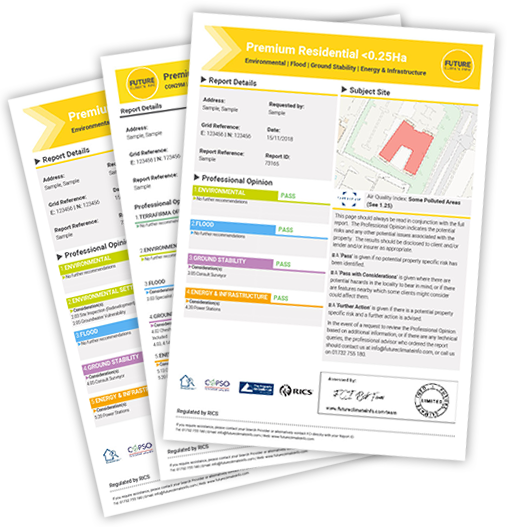
2015 Leeds Commercial Property Flooding: Towards Better Resilience
It was a day most people in Leeds did not see coming, and one the business community in the city may never forget.
Kirkstall Road, one of the main commercial streets in the city, was completely submerged under murky rainwater after a un-precedented downpour on Boxing Day 2015 from Storm Eva.
Leeds experienced significant and widespread flooding from some of the highest river levels ever recorded. The flooding was centred on the commercial/industrial area along the A65 Kirkstall Road and Stourton to the south of Leeds railway station.
Devastated business owners and residents paid the price – the deluge battered 3,355 properties in Leeds, 672 of which were businesses.
Before this event, the closest comparison was in 2000 when around 100 properties in the city flooded.
As shops, restaurants and bars prepared for a bustling Boxing Day, the Environment Agency issued a red warning – its highest alert, signalling “significant impacts to infrastructure and risk to life in the area”.
Parts of the city centre, including Sovereign Street, The Calls and Clarence Dock, felt the full force of the deluge as the evening wore on.
The River Aire at Crown Point, which is usually 0.9 metres high, rose to 2.95 metres at 1am on December 27. Its previous high was 2.45 metres, recorded in June 2007.
Businesses Disrupted and Lost
Tyrannosaurus Pets, a specialist reptile shop on Kirkstall Road, was one business hit hard by the floods. They had animals in the basement, which the business owners rescued and moved upstairs as water was coming in through the door.
It re-opened more than eight months later during the August Bank Holiday at a temporary location in Headingley. But parking was a major problem and the business lost trade while it was forced to relocate.
The owner Matthew Pedder admitted that after a year away from their shop, it had been very painful. He knew of another firm down the Kirkstall Road that had put all of their life savings into a business and open two months before the floods only to see them lose everything.
Ultimately, the direct cost to the city was an estimated £36.8m, with the cost to the wider city region being more than £500m, according to Leeds City Council.
Building Better Commercial Resilience
It was a wake-up call to protect the commercial heart of England’s fourth largest city. It had already spent £50m on a flood alleviation scheme which had started the year before covering three miles of river bank from Leeds train station to Kirkstall. This was the first time that flood defences had been placed along the River Aire.
It was one of the largest river flood alleviation schemes in the country, designed to provide increased protection to more than 3,000 homes, 500 business and 300 acres of development land.
But it clearly wasn’t enough…
Now, a second stage to the scheme is being proposed, which if the green light is given for the £112m investment, will see more ,measures being implemented along the Aire to Calverley.
The difference with Phase 2 will be a catchment-wide approach, adopting a combination of Natural Flood Management (NFM) and engineered measures to help slow the flow and catch water further up the catchment so that flood peaks are reduced further downstream.
The Phase 2 plans have a strong focus on NFM, with proposals to create new woodland areas with some 2 million new trees planted, doubling the canopy coverage in the River Aire catchment.
Water storage areas will be created and developed, operated by a control gate system meaning water can be held and then released back into the river when safe to do so. A third element would be the removal of existing obstructions along the river to help reduce water levels, along with lowering the riverbed in places to improve its capacity and flow.
The intent is to deliver NFM works over the next 30 years with the aim of sustaining the standard of protection in the face of climate change up to 2069. This would also involve:
- land management to reduce surface water run off;
- river and flood plain restoration including re-meandering of the river channel in certain areas and smaller storage ponds;
- where possible, using sites in Leeds to store flood waters when river levels are high. Current proposals include a site upstream at Calverley;
- improving the flow of water through the city with the removal of redundant bridges and widening the river channel adjacent to the A65;
- improving riverbank protection measures with enhanced woodland areas and installing debris dams;
- constructing raised defences along the river which could include landscaping, terracing, embankments and walls.
The aim is to achieve a 1 in 200 year standard of protection, but initial funding looks likely to go for a one-in-100-year level of protection using government funding supported by council and other financial support.
Commerce vulnerable to future flood risk
Leeds demonstrates how behind the curve we still are with regard to protecting our commercial infrastructure in the face of ever more extreme rainfall events. It’s not alone as a city facing these problems. Leeds has a major river running through it and therefore the focus is managing the fluvial flow. It is far harder when you have surface water events from a local deluge.
Another example where flood history has and will continue to affect commercial business includes Sheffield, where repeated flood events have been a principal reason for the proposed HS2 route to be diverted away to the east of the City.
Business disruption through flooding is one of the single biggest issues facing commercial property owners or those looking for suitable premises.
Future Climate Info provides a comprehensive flood risk assessment for commercial properties through its FCI Commercial Report. This accounts for river, sea, coastal and surface water flood extents for a full, clear and effective view on risks ahead of the transaction.
Based on the assessment, Specialist flood risk services can look at flood resilience measures and a review of flood zoning with climate change allowances can give an accurate appraisal of the likelihood of flooding into the future.
For more information, contact us on 01732 755180 or email info@futureclimateinfo.com
Try before you buy
To take advantage of a trial free order of your first environmental report, please complete the enquiry form and we will get back to you as soon as possible. We will need to take more details of the property or site and ask some more questions about your firm and the transaction.

